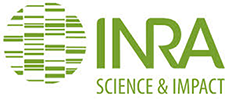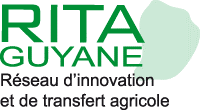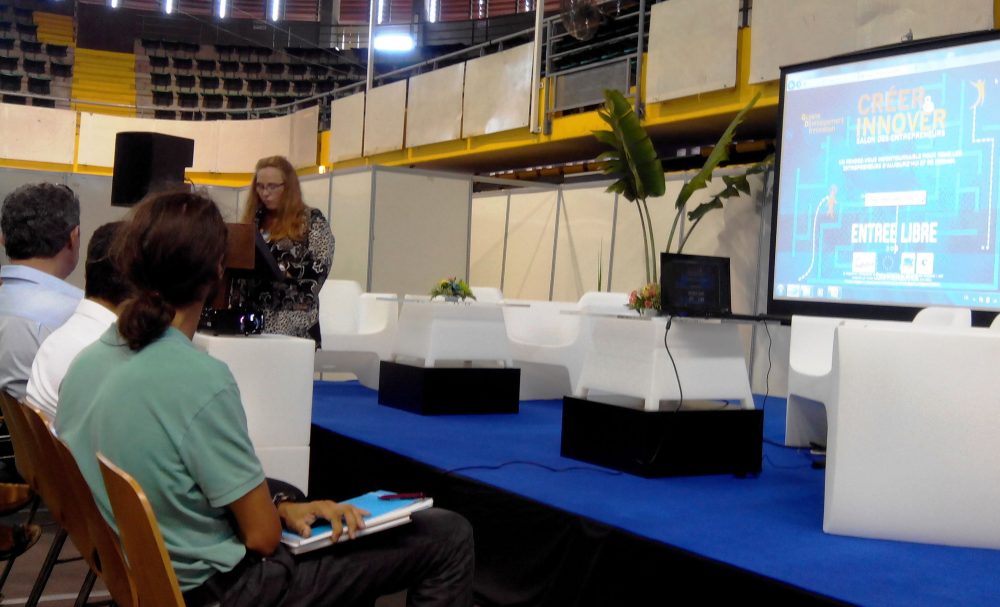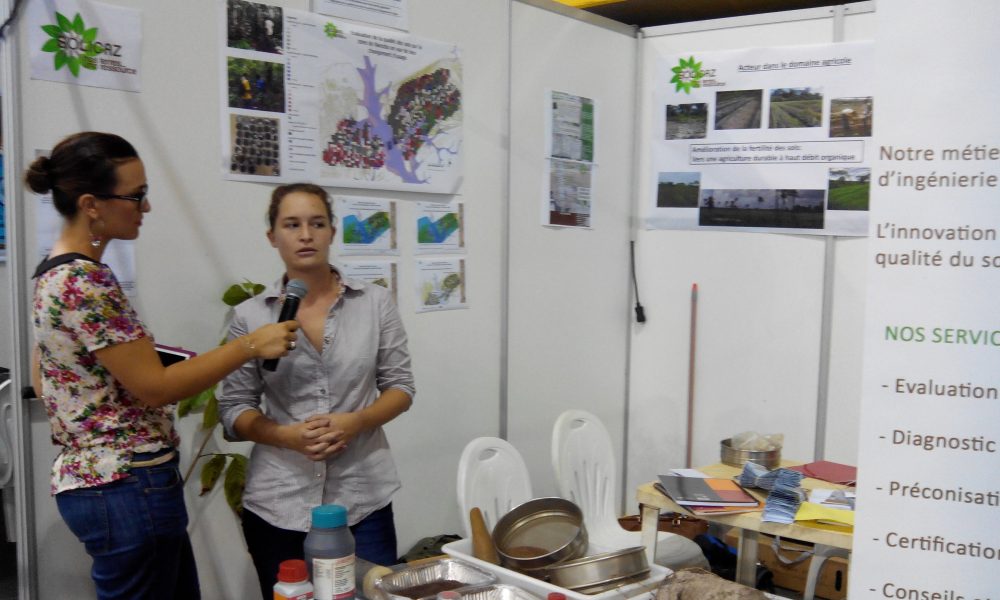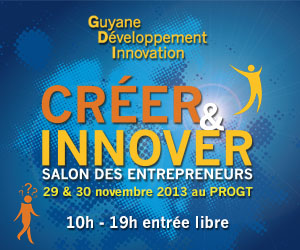
by Solicaz | Nov 30, 2013 | Uncategorized
The first “Create and innovate” Entrepreneurs’ Fair took place on Friday 29th and Saturday 30th of November, 2013, at PROGT in Matoury. This event was organized by the Regional Agency for Development and Innovation, “Guyane Développement Innovation” which provides operational assistance for innovation projects and supports them in their economic development.
The objectives of the Fair were:
- To provide French Guiana project leaders and business leaders with new information on the creation and development of businesses in the French Guianese economy.
- To interest young people and raise awareness among the general public of the entrepreneurial dynamic of the territory
- To promote innovative projects and stimulate the spirit of innovation.
Carol Ostorero, Vice President of the Regional Council for Economic Development, gave a speech on the importance of innovation and research for the evolution of the French Guianese economy. She also mentioned the commitment made by the Region to develop a global innovation strategy to improve the industry for strengthening the competitiveness of SMEs in particular.
The show brought together 33 exhibitors from different sectors and a dozen innovative companies, including Solicaz, which presented its work of innovation in sustainable development in the region.
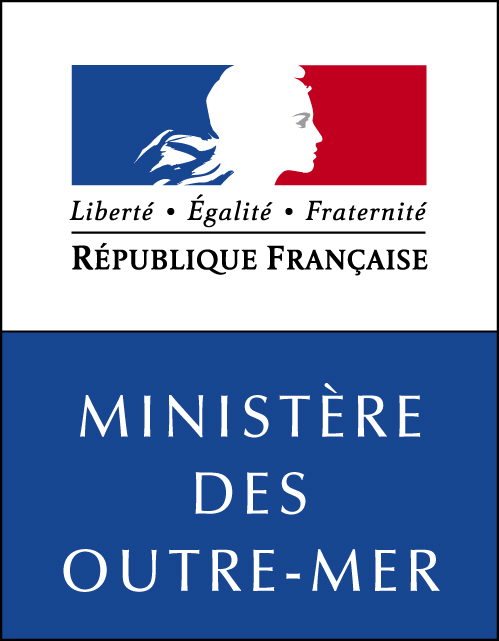
by Solicaz | Nov 4, 2013 | News 2012, Revegetation
Project carried by Solicaz
Partners: PTMG Guyana, SMSE and Ecuador Mining Operators.
The gold richness of the subsoil in the Guyana region coupled with an extremely rapid population growth generates an increase in deforestation which causes a loss of heritage of the only primary forest that Europe possesses each year. The increase in the current value of gold may accelerate this deforestation. Gold panning affects more than 20,000 hectares of forests, including official concessions and more and more illegal farms.
In the context of protecting the exceptional forest heritage of this French department, it is therefore important to support the development of this sector through research on sustainable management, reconciliatory production and environmental services.
In an environment as disturbed as that of a mine after exploitation, the soil has lost all its fertility potential both in terms of nutrients (organic matter) and in terms of its capacity to produce it (i.e. it has lost the microorganisms capable of transforming this organic matter). Under these conditions, it seems difficult to revegetate a site without large supply of inputs and without major implementation work.
The broad aim of this project is to restore plant biodiversity as well as soil fertility (soil quality) via potential nitrogen-fixing species. The project is broken down into several operational objectives seen below:
• Encourage the establishment of efficient symbioses between the microorganisms and the associated host plant;
• Perform a pre-test of revegetation on a mining site at the end of operation to test the recolonization capacity of the different species;
• Make an initial statement of the “quality” of the soils before revegetation via the use of a bio-indicator to test their biological functioning (Schimann et al., 2012).
View the report
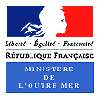


by Solicaz | Nov 4, 2013 | News 2011, Revegetation
Establishment of a production of nitrogen-fixing plants endemic to French Guiana for the restoration of degraded sites, carried out by Solicaz.
Appointment by the MEDDTL, as part of the National Strategy for Biodiversity 2011-2020.
Funded by: DEAL and the Regional Council of Guyana
Partners: PTMG, SMSE Mining Operator, Macouria EPLEFPA Farm, Guyane Consult, UMR Ecofog, and AMAP CIRAD.
The richness in gold of the subsoil in the French Guiana region coupled with an extremely rapid population growth generates an increase in deforestation which causes a loss of heritage of the only primary forest that Europe possesses each year. The increase in the current value of gold may accelerate this deforestation.
In an environment as disturbed as that of a mine after exploitation, the soil has lost all its fertility potential both in terms of nutrients (organic matter) and in terms of its capacity to produce it (i.e. it has lost the microorganisms capable of transforming this organic matter). Under these conditions, it seems difficult to revegetate a site without large supply of inputs and without major implementation work.
One method is to use certain plants which, because of their ability to metabolize nitrogen in the air, – thanks to their symbiosis with microorganisms, – can live on very poor soils without the use of nitrogen fertilizers. Acacia mangium, a legume native to Papua New Guinea and introduced to French Guiana several years ago has succeeded in this colonization of extremely poor soils because it can associate naturally with Rhizobium; rhizobium is widely found in French Guiana’s soils. However, the invasive character of Acacia mangium in an open environment engenders concern for large scale usage.
Previous works (Roggy et al 1999, Roggy et al, 1999 b, Roggy and Prévost 1999, Domenach et al., 2004) allowed us to identify in the French Guiana forest, species of trees endemic to this region and with qualities identical to those of Acacia mangium (rapid growth and/or moderate nitrogen fixers) and which could represent an alternative to this species.
The objective of the project is to provide the necessary tools for the establishment of a production chain of local nitrogen-fixing species adapted to the environment that can be used for its restoration or maintenance while meeting the needs of the sectors involved. For example, the mining and agricultural sectors could utilise the co-cultivation of these nitrogen-fixing species to minimize nitrogen inputs. Simultaneously, the installation of new trees could be used for the production of energy through biomass.
In order for this objective to be realized, the following is needed:
(1) the study of the production and multiplication of endemic nitrogen-fixing plants of French Guiana,
(2) the experimentation on degraded sites (e.g. mining sites) of the assembled species based on their functional traits for the restoration of biodiversity
(3) a study of the technical-economic feasibility for the establishment of a local production chain.
View the report
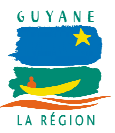



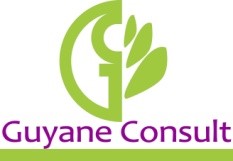



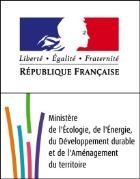

by Solicaz | Nov 4, 2013 | Agriculture/Agroforestry, News 2013
The population growth in French Guiana (anticipated to double in less than 20 years) raises the question of the sustainable development of local agricultural products. For example, for beef, local needs are only 20% satisfied by local production, and the only local sources for animal feed are grassland; most of the imports (meat and raw materials for compound feed) come from metropolitan France, with well-known difficulties in the movement of goods and a significant increase in costs. Imports from neighbouring countries (Brazil and Suriname) are now limited, but could become more important in the future. In this context, the development of local production with quality is an option selected by professional managers and local politicians.
Livestock production in French Guiana has been developed over the last twenty years, particularly in the framework of the Green Plan (Vivier et al., 1995). Since 2010, the IKARE association, which groups together the livestock sector, has been carrying out applied research activities in breeding aimed at improving the technical-economic performance of livestock farmers, transferring and popularizing the research results and innovative practices with breeders.
The main challenge of this project is therefore to aid in the provision of effective methods for French Guianese farmers to optimize soil management. This involves the development of innovative technical itineraries for soil management methods that make it possible to maintain or improve the fertility of cultivated soils, while remaining economically and socially attractive for agriculture. This optimization of soil management also reconciles production with the preservation of the quality of water and soil resources.

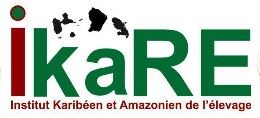
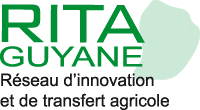
by Solicaz | Nov 4, 2013 | Agriculture/Agroforestry, News 2013
Project funded by: CIOM, EAFRD and The Regional Council of French Guiana (Le conseil Régional de la Guyane)
Partners: CIRAD, Solicaz
The GUYAFER program was created under the RITA French Guiana framework. It aims to promote and support the transition to organic farming (biological or not) to ensure the sustainability of soil resources and systems of production.
The experience accumulated in other tropical countries shows that the sustainability of agriculture under these conditions is highly dependent on the recovery of certain ecosystem functions present in the original soil-plant-climate system. Among these ecosystem functions, those whose relevance and adaptability can be better ensured for the socio-economic conditions of French Guiana are mainly related to the entry and preservation of nutrients and to organic restoration. In this sense, the practices the project will target are:
• Introduction of legumes (herbaceous and woody), in order to recover the natural entry of nitrogen into the system (symbiotic fixation) and its provision for cultivated plants (including transference, green manure, recycling after pruning or grafting);
• Organic amendments (composts, terra preta or biochar, BRF), partly to ensure the supply of nutrients with a progressive and less leachable source of decomposition and, secondly, to improve the physical-chemical properties of soils.
These practices will be developed within current agricultural systems (e.g. market gardening, orchards, giblets, etc.) and/or in systems to be promoted gradually (e.g. agroforestry). These agroforesty systems would be intended in the medium term to “mimic” the original system of nature and would thus be able to recover a greater number of functions in comparison to other systems.
This broader aim is divided into three specific objectives:
1- To carry out a diagnosis of the potentials and the constraints of the main agricultural soils of French Guiana, – in particular their chemical, physical and biological properties.
2- Improve soil fertility through practices adapted to the pedoclimatic, socio-economic and agronomic conditions of each region and / or sector.
3- Integrate all these practices in the context of improvement.
View the report

